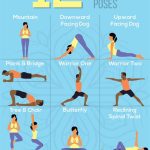Mastering the Foundations of Yoga: 6 Essentials for Everyone
Yoga is more than just a physical exercise; it is a holistic practice that unites the body, mind, and spirit. While yoga’s popularity continues to rise globally, many beginners and even seasoned practitioners often miss out on fundamental aspects that can enhance their overall experience and maximize benefits. This guide explores the six key pillars that everyone, from novices to advanced yogis, should understand to develop a sustainable and enriching yoga practice.
Introduction
Yoga has transcended its origins as an ancient practice in India to become a global phenomenon. It offers a multitude of benefits, from improving flexibility and strength to promoting mental clarity and emotional well-being. However, many people dive into yoga classes without grasping the foundational concepts. This can lead to imbalances, poor form, and even injury. To get the most out of yoga, it’s essential to master the basics first. This article will cover six foundational elements that form the core of any effective and rewarding yoga practice.
Key Concepts
- Breathing (Pranayama): The breath is the cornerstone of yoga. Proper breathing techniques energize the body and calm the mind. Breathing serves as a connection between the physical and mental aspects of yoga practice.
- Posture (Asanas): Mastery of basic poses is crucial. Each asana (pose) not only stretches and strengthens specific muscle groups but also enhances flexibility and balance.
- Alignment: Practicing yoga with the correct alignment prevents injury and ensures that each pose benefits the targeted muscle groups and organs.
- Mindfulness: Yoga is as much a mental practice as it is physical. Being fully present during each pose and breath helps develop mental focus and awareness.
- Consistency: Yoga is a cumulative practice that yields results over time. Regular practice, even in small amounts, leads to significant mental and physical changes.
- Philosophy: Yoga isn’t just a workout; it’s a way of life that encourages ethical behavior and mindfulness in every aspect of living.
Historical Context
The roots of yoga can be traced back over 5,000 years to the Indus Valley Civilization in India. Initially, it was a spiritual discipline closely linked to religious and philosophical traditions such as Hinduism, Jainism, and Buddhism. Over the centuries, various forms of yoga emerged, including Hatha Yoga, which focused on physical postures and breathing techniques.
In the early 20th century, yoga gained popularity in the West, largely due to the efforts of influential teachers such as Swami Vivekananda, T. Krishnamacharya, and B.K.S. Iyengar. Yoga in the West evolved to emphasize its physical components, although its spiritual and mental aspects remain integral parts of the practice.
Current State Analysis
Today, yoga is practiced by millions around the world in various forms, from hot yoga to restorative yoga. However, the commercialization of yoga has led to a focus on physical appearance and performance, sometimes at the expense of its deeper benefits. Many beginners rush into advanced poses, neglecting proper form and breathing techniques, which are the foundations of a safe and effective practice.
Moreover, the explosion of online yoga classes has made the practice more accessible, but it also creates challenges. Without in-person guidance, practitioners may adopt incorrect postures or push themselves too far, leading to burnout or injury. As a result, a return to the basics has become more important than ever.
Practical Applications
Yoga can be integrated into daily life in many practical ways. Whether you’re looking to build flexibility, reduce stress, or improve mental clarity, consistent practice can yield significant benefits. Here’s how to apply the six foundational elements of yoga:
- Breathing: Start each session with controlled breathing exercises to calm the nervous system and focus the mind.
- Postures: Focus on mastering a few basic poses before moving on to more advanced asanas. Pay attention to how your body feels and make adjustments as necessary.
- Alignment: Use mirrors or video recordings to check your form. Seek guidance from a certified instructor to correct your posture.
- Mindfulness: Stay present in each pose. Avoid thinking about your to-do list or comparing yourself to others in the class.
- Consistency: Dedicate at least 10-15 minutes each day to yoga, even if it’s a short session.
- Philosophy: Incorporate yoga’s ethical principles, such as non-violence (Ahimsa) and truthfulness (Satya), into your daily interactions.
Case Studies
To illustrate the impact of focusing on the basics, consider the following case studies:
| Case Study | Problem | Solution | Outcome |
|---|---|---|---|
| Emma: New to Yoga | Rushing into advanced poses without proper alignment. | Focused on basic poses and breathing for 3 months. | Reduced muscle strain and improved posture. |
| David: Overworked Professional | High stress and lack of mental clarity. | Practiced mindfulness-based yoga daily for 10 minutes. | Improved mental focus and reduced anxiety. |
| Sarah: Experienced Yogi | Plateaued in her practice. | Revisited foundational poses and pranayama techniques. | Rediscovered depth in her practice and overcame the plateau. |
Stakeholder Analysis
Yoga involves various stakeholders, each with unique interests and perspectives. Understanding their roles is key to grasping the bigger picture of how yoga fits into modern life.
- Yoga Instructors: Responsible for teaching and guiding practitioners to ensure safe and effective practice.
- Practitioners: Range from beginners to advanced yogis, each with different goals, such as improving flexibility or reducing stress.
- Healthcare Providers: Often recommend yoga as part of a holistic approach to wellness, particularly for managing stress, anxiety, or chronic pain.
- Fitness Industry: Commercializes yoga by offering trendy variations, leading to both increased accessibility and potential overemphasis on physical appearance.
- Spiritual Practitioners: Seek to preserve the ancient spiritual aspects of yoga that may be overlooked in modern practice.
Implementation Guidelines
For those looking to start or deepen their yoga practice, here are some guidelines to ensure success:
- Start Slow: Focus on foundational poses and breathing before attempting advanced asanas.
- Seek Guidance: Work with a certified yoga instructor, especially when starting out or transitioning to new poses.
- Stay Consistent: Practice regularly, even if it’s just for 10 minutes a day. Consistency leads to long-term benefits.
- Listen to Your Body: Yoga is not about pushing yourself to the limit. Pay attention to how your body feels and modify poses as needed.
- Incorporate Breathwork: Make pranayama a central part of your practice to enhance physical and mental benefits.
Ethical Considerations
Yoga’s popularity has led to the commodification of the practice, raising ethical questions. For example, the Western focus on physical postures can overshadow yoga’s deeper spiritual and ethical dimensions. Additionally, cultural appropriation concerns have emerged, with some practitioners and studios disregarding yoga’s roots in Indian culture.
To practice yoga ethically, it’s important to honor its traditions and respect its philosophical underpinnings. This includes embracing the ethical teachings of yoga, such as non-violence, truthfulness, and self-discipline, and acknowledging its cultural heritage.
Limitations and Future Research
Despite its widespread adoption, there are still limitations to yoga that need to be addressed. For instance, research on yoga’s mental and physical health benefits is still evolving, with many studies limited by small sample sizes and lack of rigorous scientific methodology. Future research should explore yoga’s impact on diverse populations, including those with specific health conditions, to provide more tailored guidance.
Additionally, as yoga continues to evolve, there is a growing need to revisit its foundational teachings to ensure that the practice remains accessible, safe, and true to its original purpose.
Expert Commentary
Yoga, at its core, is a lifelong journey that requires patience, dedication, and a willingness to return to the basics. As the practice continues to evolve, it’s crucial for both beginners and experienced practitioners to stay grounded in its foundational elements. Mastering the basics—breathing, alignment, mindfulness, and consistency—not only prevents injury but also deepens the practice and allows individuals to experience yoga’s full transformative potential.








